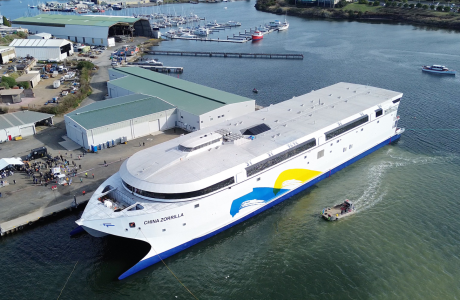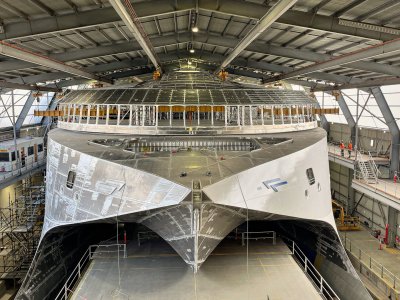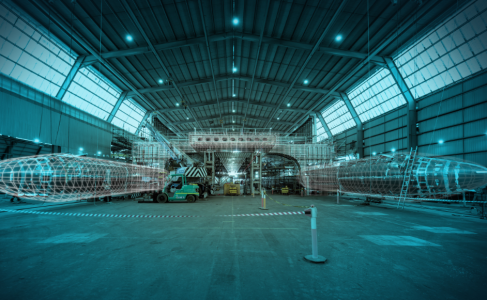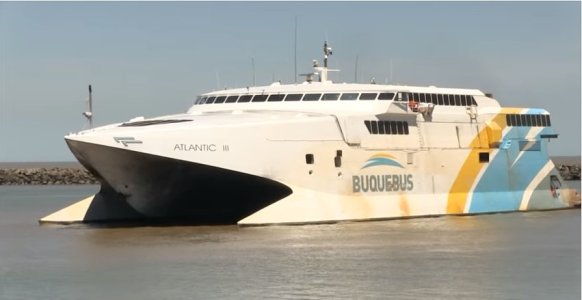earlyretirement
Moderator
Argentine-owned Buquebus is set to revolutionize maritime transport with the commissioning of the world's largest 100% electric high-speed catamaran ferry, currently under construction by Incat Tasmania in Australia. This vessel, known as Hull 096 and named China Zorrilla, represents a significant leap forward in sustainable shipping and maritime technology.
Key Features and Specifications
-Length: 130 meters
-Passenger Capacity: Up to 2,100 passengers
-Vehicle Capacity: 225–226 vehicles
-Propulsion: 100% battery-electric, powered by eight electric waterjets
-Batteries: Over 250 tonnes, with an energy storage system (ESS) exceeding 40 megawatt-hours—four times larger than any previous maritime installation
-Speed: Expected top speed around 37.5 knots
-Amenities: Includes a 2,300 m² duty-free retail deck (the largest shopping space on any ferry in the world), restaurants, and world-class facilities for passengers, including those with disabilities
Construction and Launch Timeline
Structural Completion: Achieved in October 2024, with the final passenger deck module installed
Launch: The vessel was launched on May 2, 2025, in Hobart, Tasmania
Sea Trials: Scheduled for later in 2025 on the River Derwent
Operational Date: Expected to enter service in October 2025, operating between Buenos Aires, Argentina, and Uruguayan ports (Colonia and Montevideo) across the Río de la Plata
Technology and Environmental Impact
Zero Emissions: The ferry is fully battery-powered, resulting in zero emissions during operation
Power System: The vessel uses a sophisticated battery electric propulsion system supplied by Wärtsilä, featuring:
-40 MWh battery modules
-Eight permanent magnet electric motors
-Eight Wärtsilä WXJ1100 waterjets
-Smart energy management and DC shore charging systems
-Port Infrastructure: Buquebus is investing an additional USD 14 million in charging stations and transmission infrastructure to support the vessel's operations
Construction Sustainability: Incat Tasmania uses renewable energy in its shipbuilding processes, aligning with Tasmania’s net-zero emissions status since 2013
Significance and Industry Impact
This vessel is not only the largest battery-electric ship ever built, but also the largest electric vehicle of its kind, setting a new global standard for sustainable maritime transport.
The project is a milestone in public-private collaboration, driven by Buquebus’s and Incat’s commitment to sustainability and service excellence.
The ship’s advanced technology and scale demonstrate that large-scale, low-emission transport solutions are viable today, positioning Tasmania and Australia at the forefront of green shipbuilding.
As my friends know, I love all things electric. I was one of the first in the world to get the Tesla Model S when it came out in 2012. I was one of the first in the world to get the Tesla Model X and just got the Rivian R1S which is a beast! I ordered the Roadster convertible MANY years ago but like many things Elon Musk has promised, never delivered on. I'm giving up on that.




Key Features and Specifications
-Length: 130 meters
-Passenger Capacity: Up to 2,100 passengers
-Vehicle Capacity: 225–226 vehicles
-Propulsion: 100% battery-electric, powered by eight electric waterjets
-Batteries: Over 250 tonnes, with an energy storage system (ESS) exceeding 40 megawatt-hours—four times larger than any previous maritime installation
-Speed: Expected top speed around 37.5 knots
-Amenities: Includes a 2,300 m² duty-free retail deck (the largest shopping space on any ferry in the world), restaurants, and world-class facilities for passengers, including those with disabilities
Construction and Launch Timeline
Structural Completion: Achieved in October 2024, with the final passenger deck module installed
Launch: The vessel was launched on May 2, 2025, in Hobart, Tasmania
Sea Trials: Scheduled for later in 2025 on the River Derwent
Operational Date: Expected to enter service in October 2025, operating between Buenos Aires, Argentina, and Uruguayan ports (Colonia and Montevideo) across the Río de la Plata
Technology and Environmental Impact
Zero Emissions: The ferry is fully battery-powered, resulting in zero emissions during operation
Power System: The vessel uses a sophisticated battery electric propulsion system supplied by Wärtsilä, featuring:
-40 MWh battery modules
-Eight permanent magnet electric motors
-Eight Wärtsilä WXJ1100 waterjets
-Smart energy management and DC shore charging systems
-Port Infrastructure: Buquebus is investing an additional USD 14 million in charging stations and transmission infrastructure to support the vessel's operations
Construction Sustainability: Incat Tasmania uses renewable energy in its shipbuilding processes, aligning with Tasmania’s net-zero emissions status since 2013
Significance and Industry Impact
This vessel is not only the largest battery-electric ship ever built, but also the largest electric vehicle of its kind, setting a new global standard for sustainable maritime transport.
The project is a milestone in public-private collaboration, driven by Buquebus’s and Incat’s commitment to sustainability and service excellence.
The ship’s advanced technology and scale demonstrate that large-scale, low-emission transport solutions are viable today, positioning Tasmania and Australia at the forefront of green shipbuilding.
As my friends know, I love all things electric. I was one of the first in the world to get the Tesla Model S when it came out in 2012. I was one of the first in the world to get the Tesla Model X and just got the Rivian R1S which is a beast! I ordered the Roadster convertible MANY years ago but like many things Elon Musk has promised, never delivered on. I'm giving up on that.





